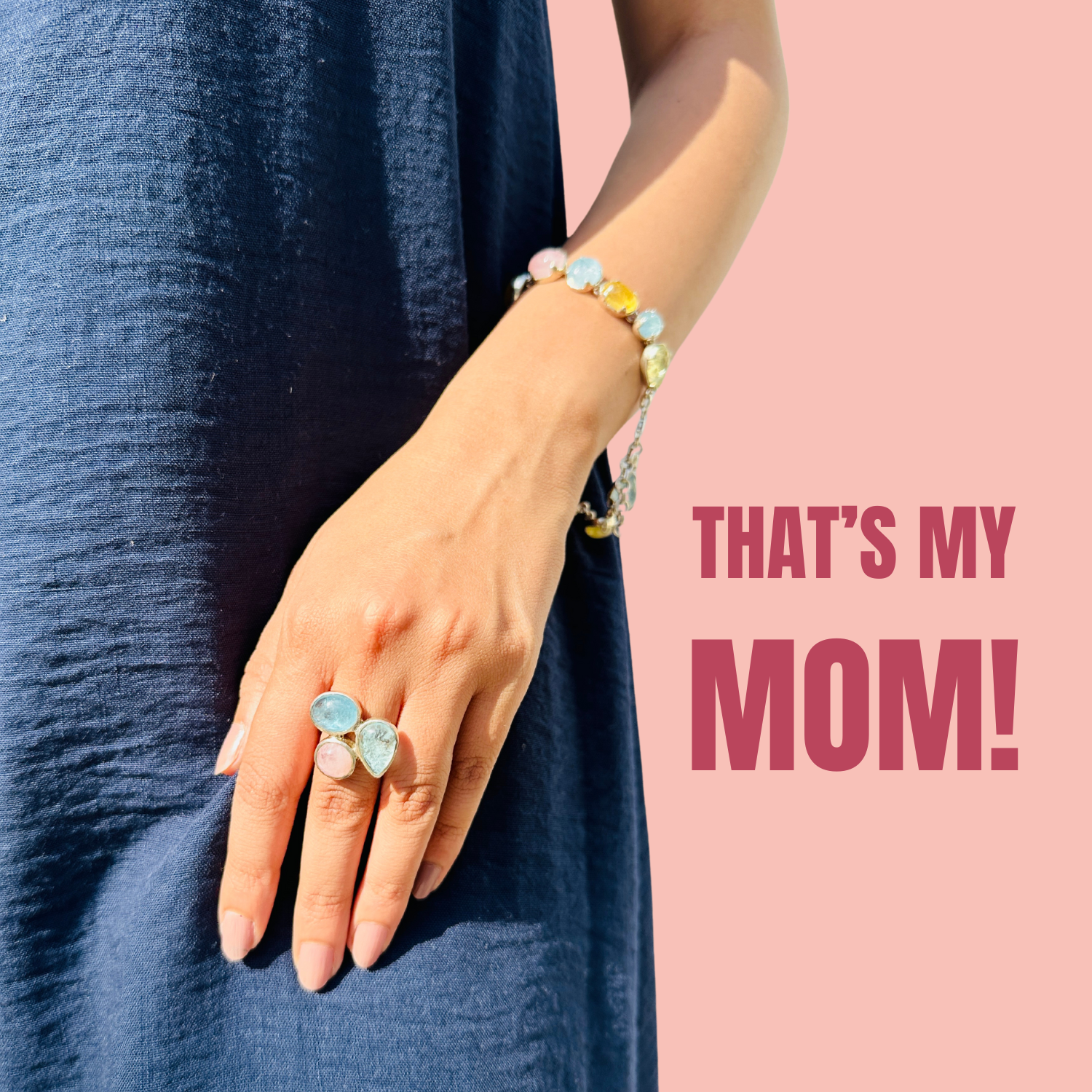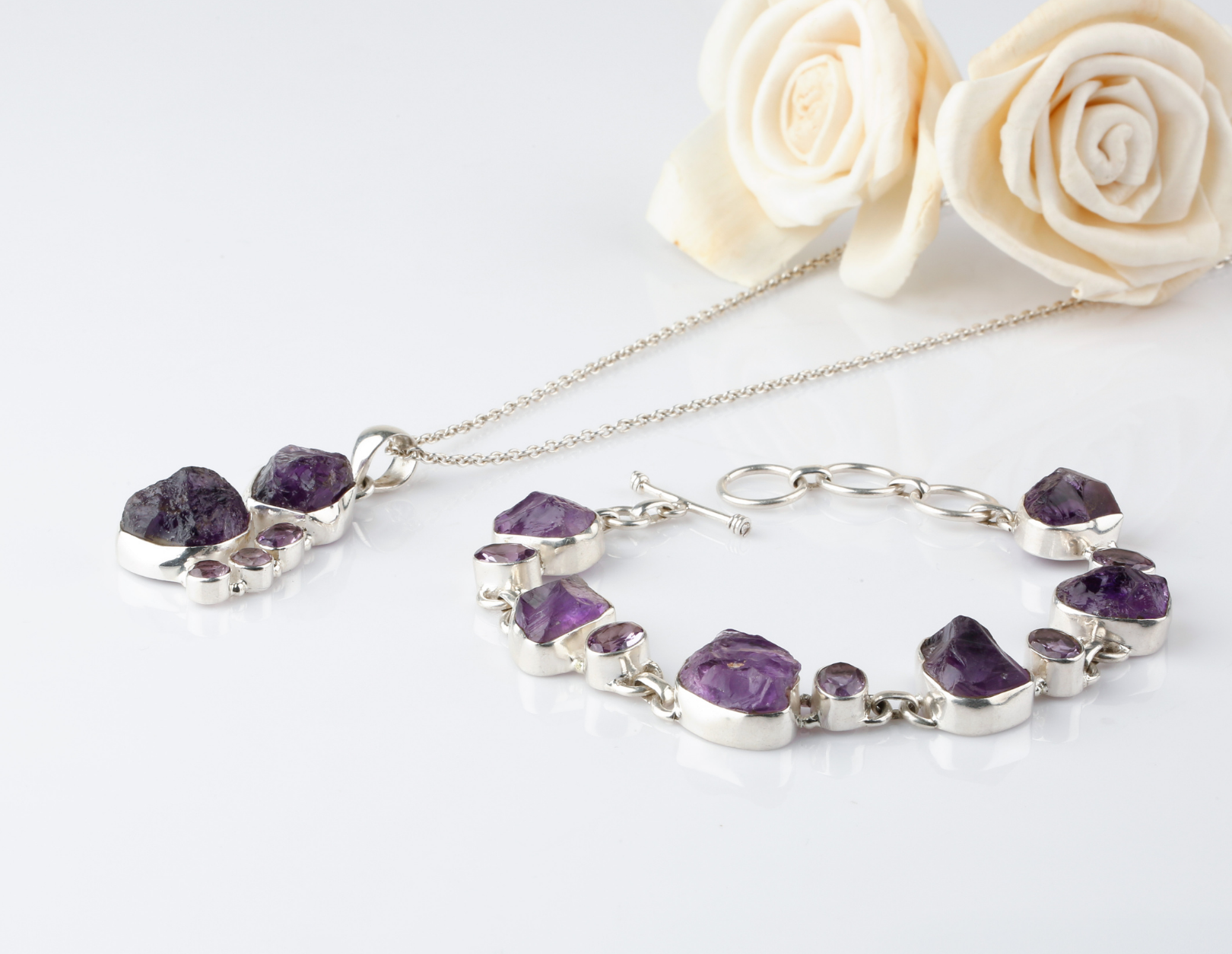Aquamarine is reminiscent of the crystal blue waters of the Mediterranean Sea, as one would expect from a gemstone whose name implies sea water. Conjuring up lovely memories of cheerful, warm, bright afternoons by the sea and memorable occasions.
An extremely wearable light blue gemstone that can go from day to night and can withstand a few hits without cracking or damage. They may be put in any type of jewelry and look gorgeous when coupled with diamonds and other colorful gemstones.
Aquamarine can be mistaken for Blue Topaz as the color can be quite similar, though Topaz does tend to have a more ‘neon’ edge to it as it is often irradiated to enhance its color.

WHERE DOES AQUAMARINE COME FROM?
Brazil has the largest and best-known resource of aquamarine, although other areas include Pakistan, China, Myanmar, Russia, Ukraine, and, more recently, Africa. Aquamarine was mined in Nigeria and Mozambique until it was discovered in Kenya and Zambia in the 1980s and Mozambique in the 1990s. Some of the world's finest aquamarine has just been discovered in adjacent Mozambique. These stones rival the colors of Brazil's famous Santa Maria Aquamarine, which has long been regarded as the peak of Aquamarine color. These magnificent Mozambican Aqua have been called Santa Maria Afrique after their Brazilian counterparts.
BLUES, HUES AND VARIETIES OF AQUAMARINE
Aquamarines vary in color. Many blue colors exist depending on the hue and tone of the gemstone. Variations range from light blue to dark blue or even dark green with overtones of blue. Most gemstones exhibit a blue to blue-green color. “The best gems combine high clarity with limpid transparency and blue to slightly greenish blue hues.” In conclusion, the most valuable Aqua possesses a medium tone, vivid and blue in hue.
AQUAMARINE JEWELRY
Aquamarine jewelry, which represents the planet of courage and confidence, boosts the wearer's self-esteem, oratory skills, and leadership qualities, allowing them to make wise decisions. This makes Aquamarine jewelry ideal for advocates, judges, public relations professionals, news reporters, and people in other professions where mass interaction and authority are involved. Aside from these occupations, sailors, military personnel, and travelers benefit from aquamarine jewelry, which is thought to be a charm of good luck and protection. Aquamarine jewelry supports financial stability, commercial growth, professional prosperity, and the strengthening of love and understanding in personal relationships.

QUALITY OF AQUAMARINE?... What should I keep an eye out for?
Aquamarine Color - The finest Aquamarines have a magnificent somewhat greenish blue color with relatively strong color saturation/intensity. Some aquamarine is naturally yellow/green in color; however, this green tint may be eliminated by heating the gemstone. Some Aquamarine undergoes this treatment on a regular basis to eliminate the greener colors and bring out or accentuate the blue tones. The term 'heat treated (routine)' is commonly seen in the market and is widely acknowledged in the gem trade. A good, natural, untreated Aquamarine, on the other hand, will attract a greater price.
Aquamarine Clarity Enhancements - Aquamarine crystals usually grow naturally without eye-visible flaws. Thus, they frequently receive better clarity grades than their fellow beryl stones, emeralds. Nevertheless, aquamarines do sometimes have noticeable inclusions. Since aquamarines with good clarity are common, any such flaws can lower their value considerably. To improve poor clarity, aquamarines may undergo fracture filling with epoxy resins. This is a rare but accepted aquamarine treatment, as long it’s disclosed to the consumer.

A FASHION PARADE




